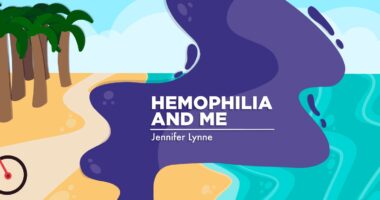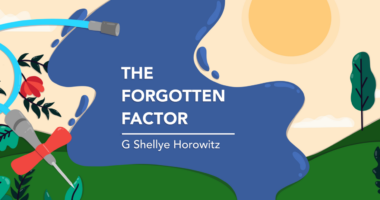I don’t look sick, but that doesn’t mean I live without challenges
What it's like living with a bleeding disorder that hides in plain sight

The other day, a neighbor stopped me in the walkway and asked, “Are you feeling OK?”
I said yes, I was fine, though I was a little surprised by the question. Then came the explanation: They’d read I have a blood disorder.
That moment stuck with me. On the outside, I look perfectly fine. I walk my neighbor’s dog, carry groceries, attend meetings, and live my life like anyone else. But living with hemophilia — or any bleeding disorder — means there’s an entire side of me that isn’t visible. It’s an invisible illness.
What people expect illness to look like
Many people imagine sickness as something that gets worse over time, like cancer, Parkinson’s, or Alzheimer’s. They picture someone pale, frail, or hooked up to machines. But hemophilia isn’t like that. It’s not a progressive disease that advances stage by stage.
Instead, it’s a condition, something I was born with and will always have. My blood doesn’t clot the way it should, which can turn a small injury into something more serious. But it isn’t a disease that eats away at me over time. That distinction matters, because it means that even though I live with limitations, I also live with strength and stability.
That doesn’t mean hemophilia is without challenges. Life with the condition involves managing treatments, being cautious about injuries, and sometimes dealing with unexpected pain or fatigue. But it also means I can live a full, vibrant life, because while hemophilia is a part of me, it doesn’t define me.
Living with the unseen
One of the hardest things about invisible illness is that it hides in plain sight. Bleeding disorders can mean planning around infusions, worrying about bruises that take forever to heal, or carefully weighing whether a seemingly routine medical procedure might spiral into something serious.
None of that shows up on my face when I’m standing in line at the grocery store or chatting with a neighbor. Outwardly, I might look like everything is fine. Inside, I may be calculating risks or quietly dealing with discomfort.
And invisible illness isn’t unique to bleeding disorders. Friends with diabetes, migraines, autoimmune conditions, and mental health challenges all live in that same space where the outside doesn’t tell the whole story. Just because you can’t see it doesn’t mean it isn’t real.
Another layer is that most people still don’t think of women when they hear the word “hemophilia.” For decades, the condition was seen as something that only men had, while women were brushed off as “just carriers.” Today we know better: Women can and do have hemophilia, and our experiences deserve to be recognized. That’s why awareness is so important.
In asking if I was OK, my neighbor was showing care. It reminded me how important it is to see people beyond appearances and to approach with compassion, not assumptions.
So do I look and feel sick? No. But that doesn’t mean I’m not living with challenges you can’t see. And maybe that’s the lesson for all of us: You never really know what someone is carrying, so lead with kindness.
Note: Hemophilia News Today is strictly a news and information website about the disease. It does not provide medical advice, diagnosis, or treatment. This content is not intended to be a substitute for professional medical advice, diagnosis, or treatment. Always seek the advice of your physician or another qualified health provider with any questions you may have regarding a medical condition. Never disregard professional medical advice or delay in seeking it because of something you have read on this website. The opinions expressed in this column are not those of Hemophilia News Today or its parent company, Bionews, and are intended to spark discussion about issues pertaining to hemophilia.







Leave a comment
Fill in the required fields to post. Your email address will not be published.